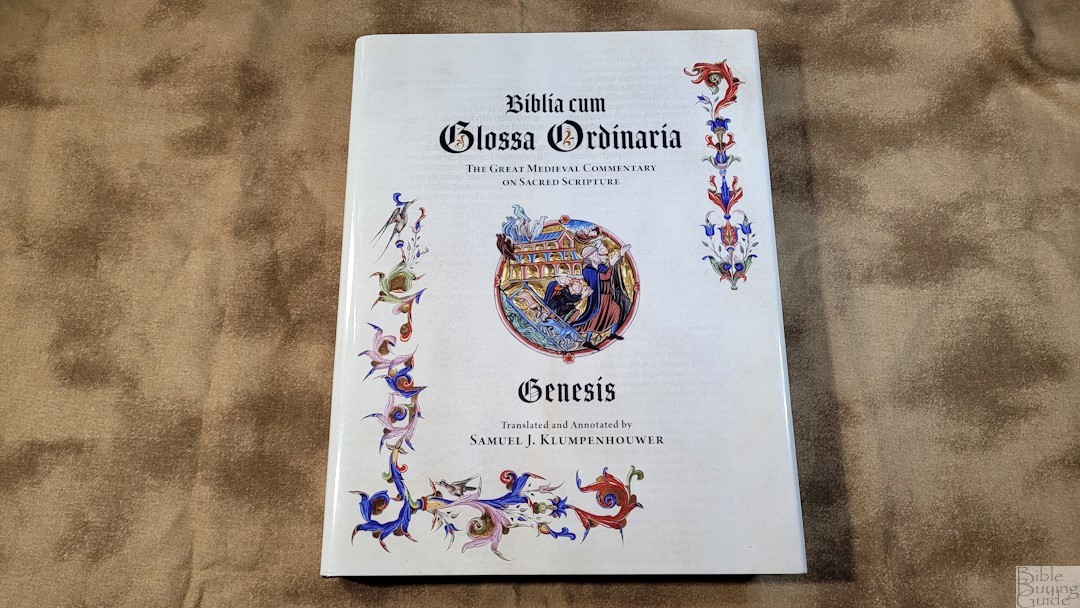
Purchase from Amazon (affiliate) link https://amzn.to/3Q4wo3u
The author provided this Bible in exchange for an honest review.
Materials
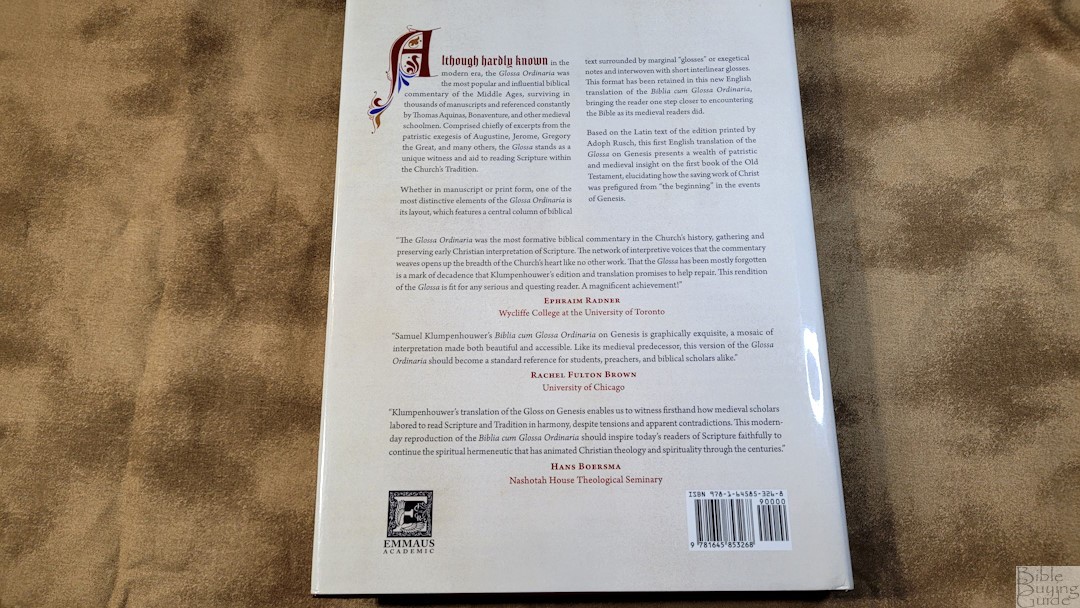
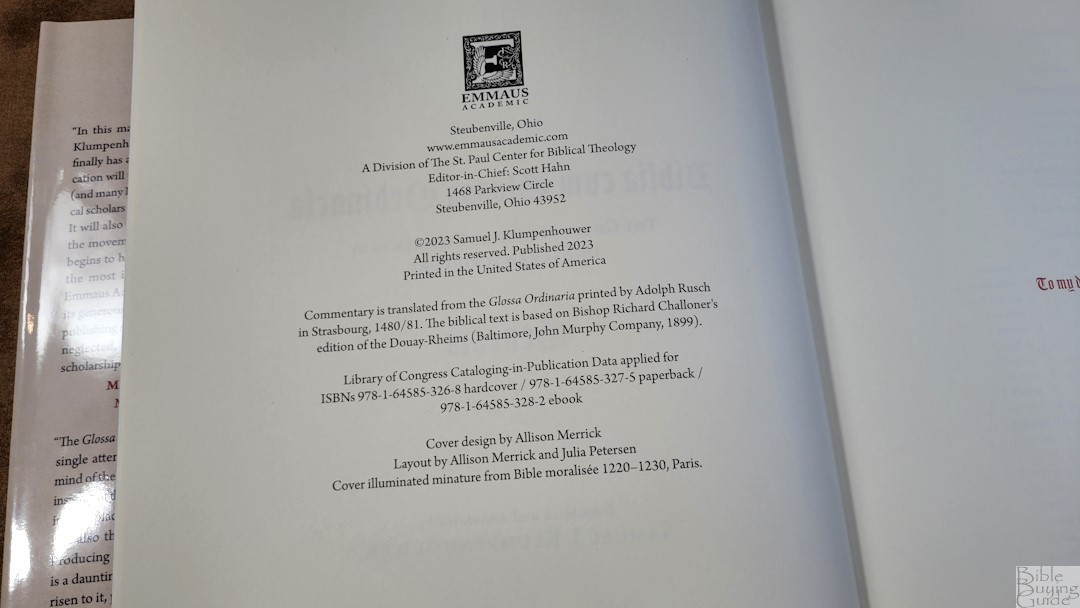
This is a hardcover edition with a dust jacket. The actual cover is dark red. It’s sewn. The paper is extra thick, possibly 100 GSM. This makes it difficult to lie flat. It stays open in the center but will try to close in the front and back. It’s extremely opaque and a creamy color. It looks and feels elegant. The overall size is 8.75 x 11.25 x 1.25″, and it weighs
Introduction and Prologue
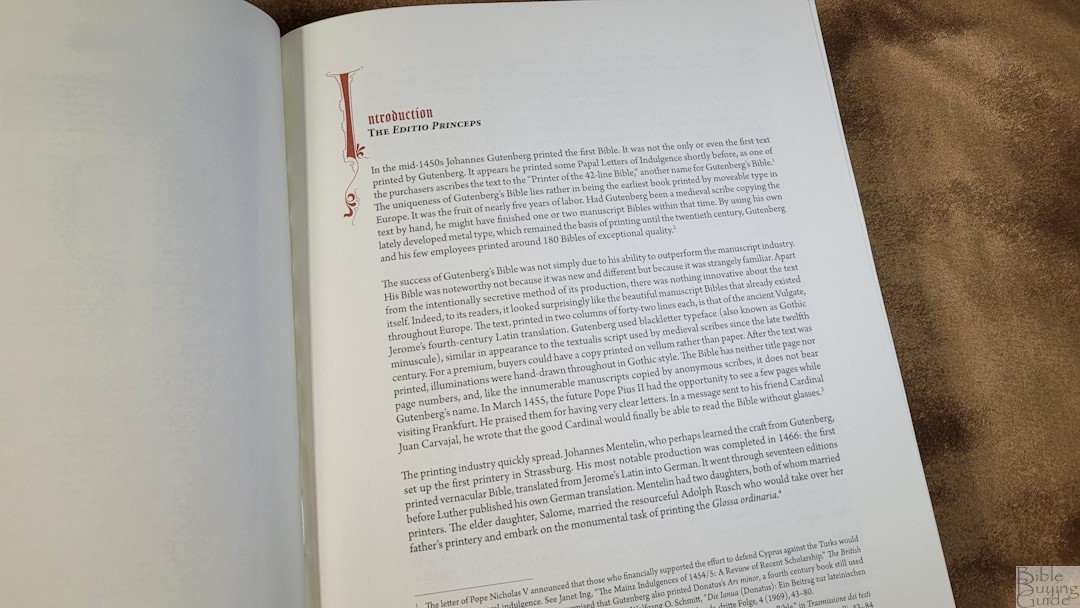
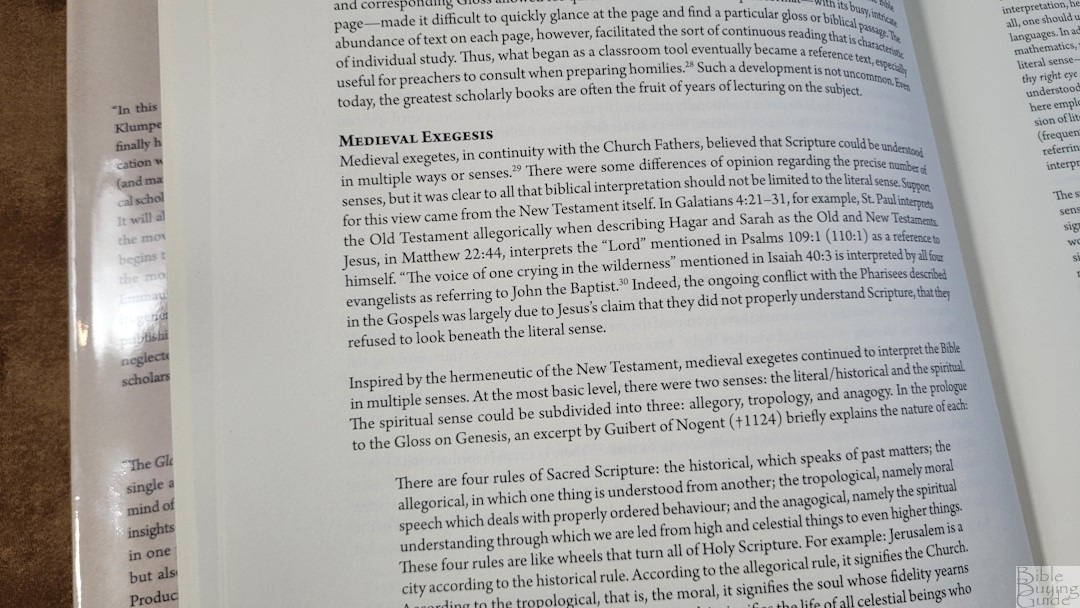
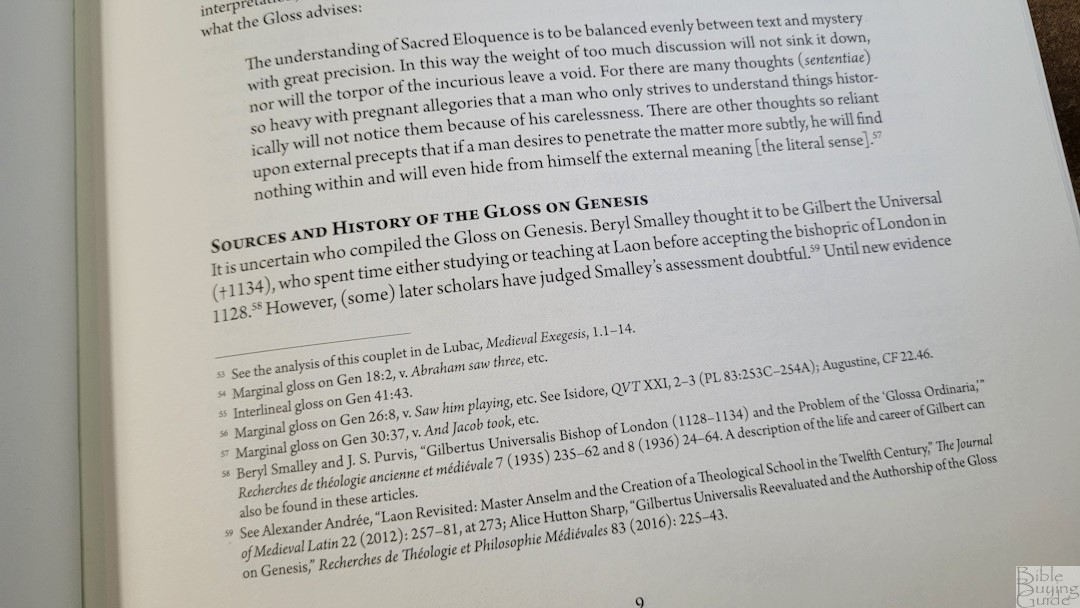
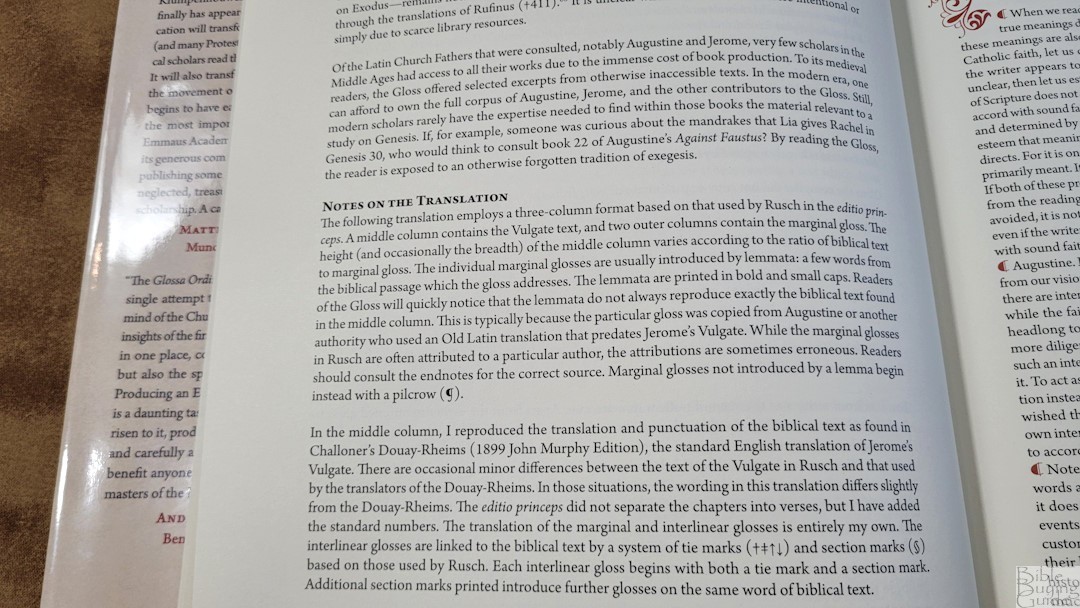
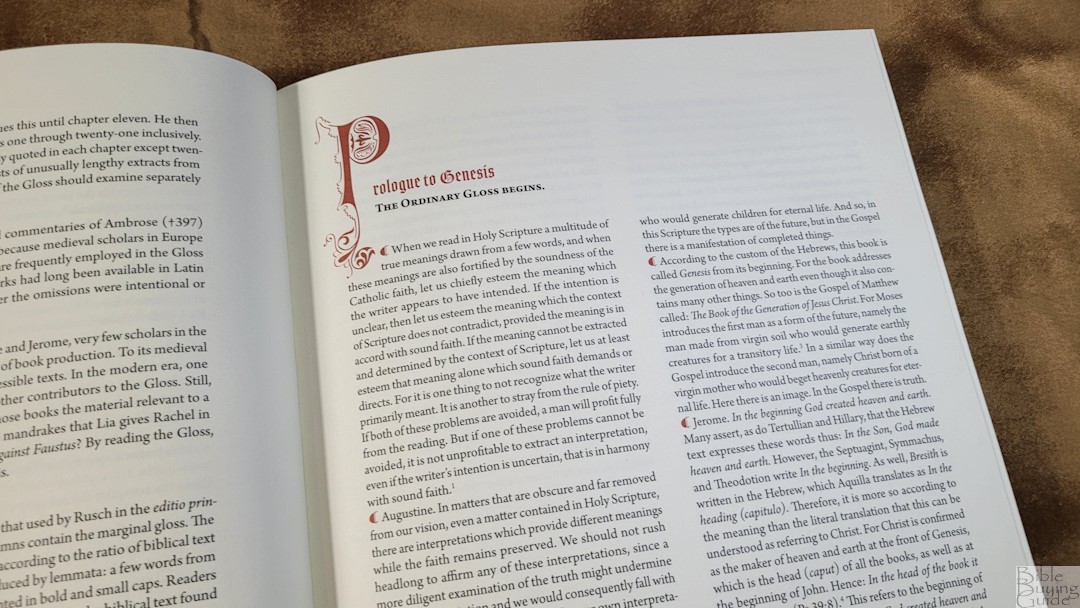
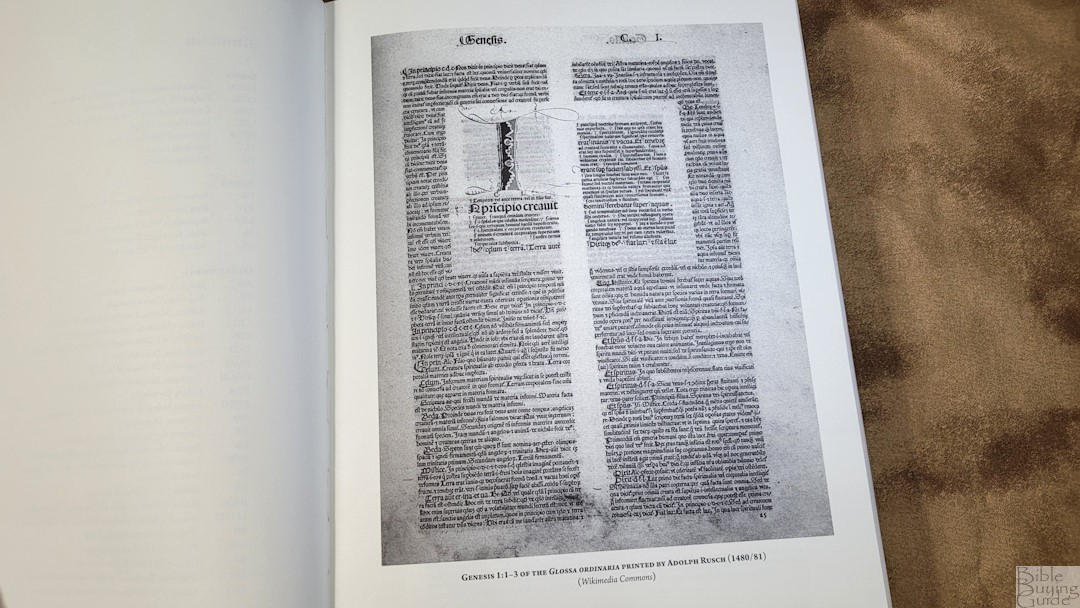
The introduction material provides a background history of Bible printing and commentaries, compares the commentary with several modern editions, and shows the need for this edition. It also includes a prologue to Genesis which works as an introduction from from some of the ancient writers.
Typography and Layout
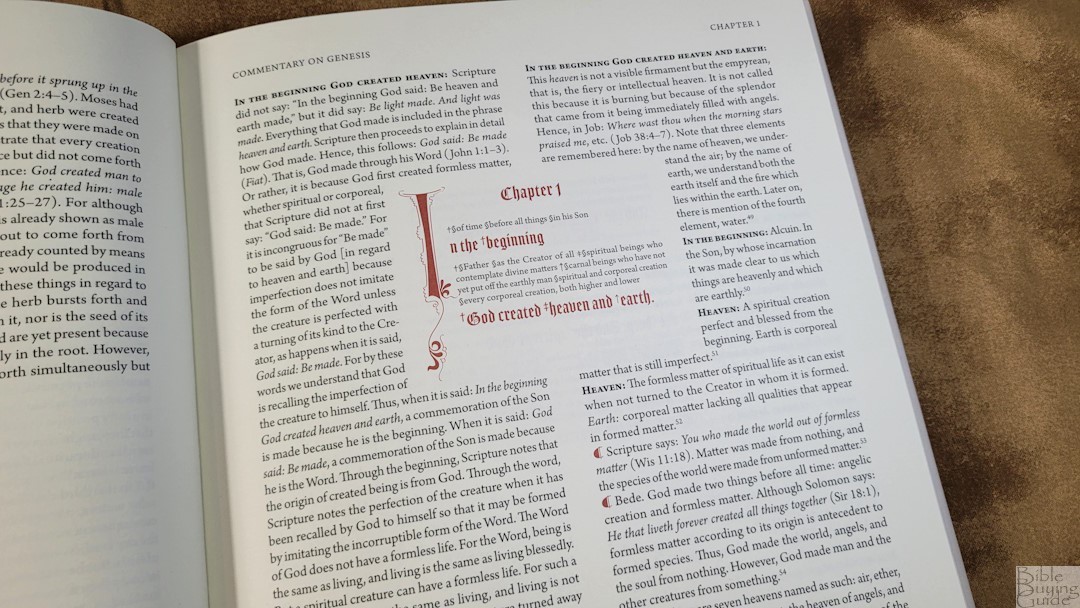

Biblia cum Glossa Ordinaria’s unique layout has been retained in this new English translation, allowing readers to encounter the Bible the same way that medieval readers did. The text of Genesis is printed in the center of the page in a large red caligraphy-style typeface. Many pages print the text taking 2/3 of the page with only one column for the commentary. Translation footnotes are placed between the lines of text and are keyed to the text with crosses. Commentary surrounds the text in two columns, wrapping around the text when needed. The main subject of the comment is in bold. The header shows the chapter number in the outer margin and the book title in the inner margin.
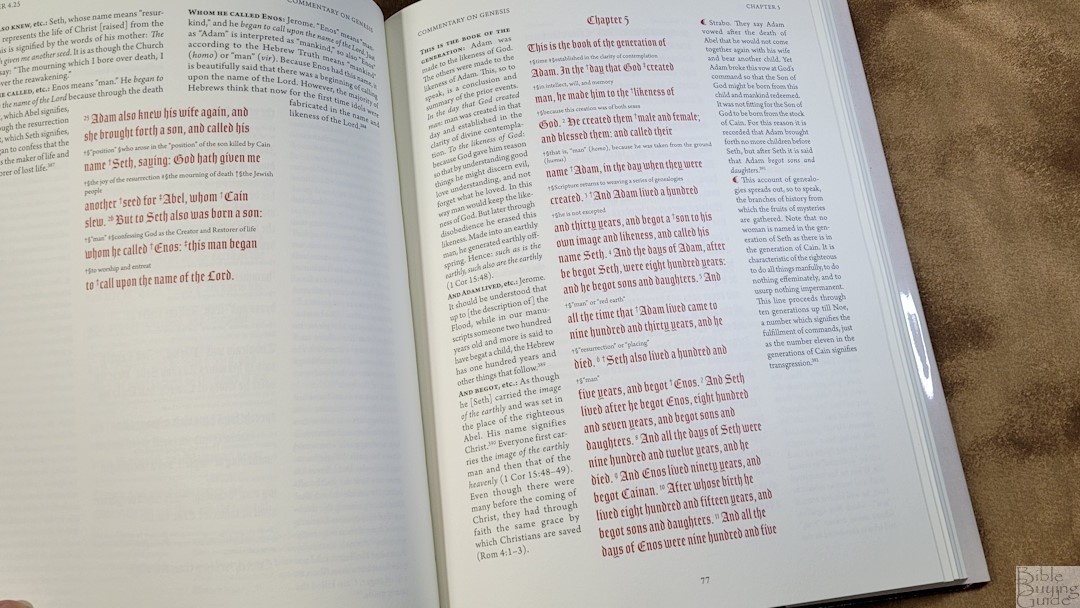
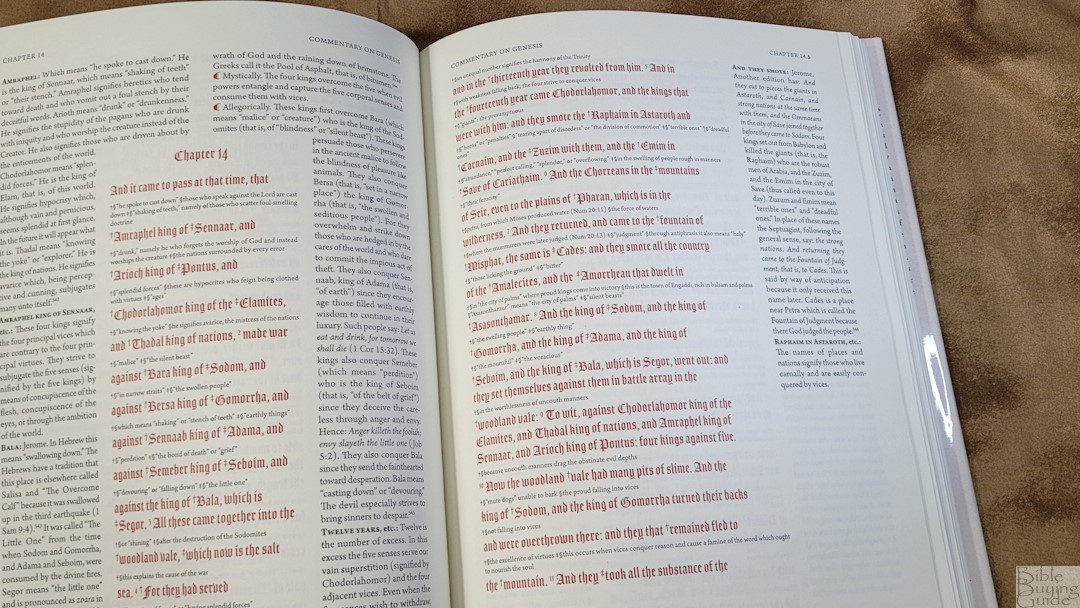
The text is around 14-point. It’s dark red and looks amazing. Even though it’s an old-style typeface, it’s still easy to read. The commentary is around 10 point. It’s black and in a modern typeface. Both typefaces have lots of whitespace. I do find the footnotes within the text to be a distraction, but this edition wasn’t made with reading in mind anyway.
Translation
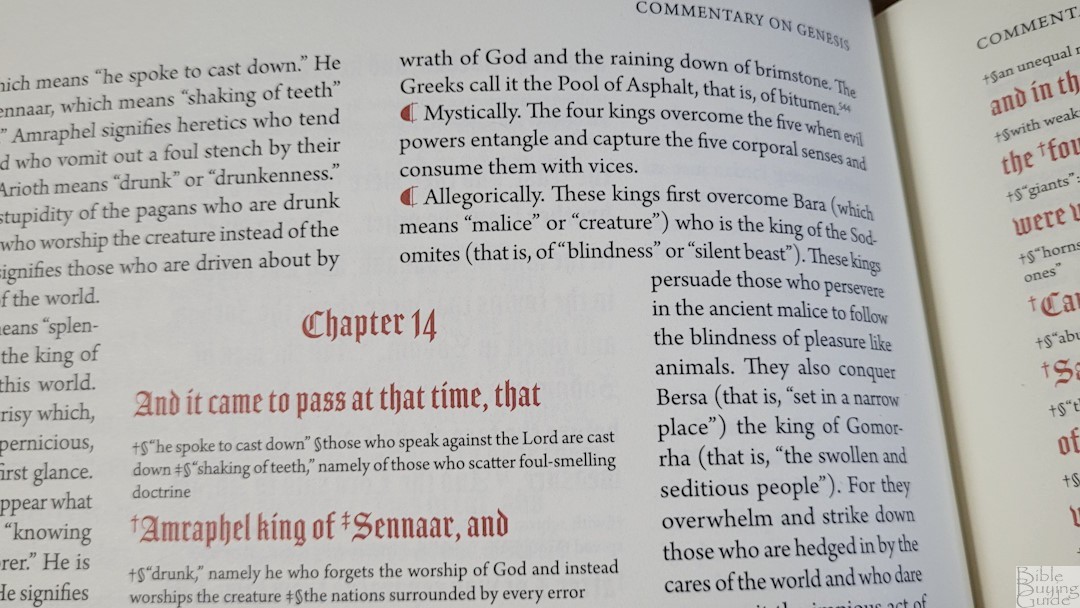
This is the first English translation of the Glossa, the book of Genesis. The translation is based on the Latin text printed by Adoph Rusch and is similar to the The translation notes include a lot of theological interpretation.
Commentary
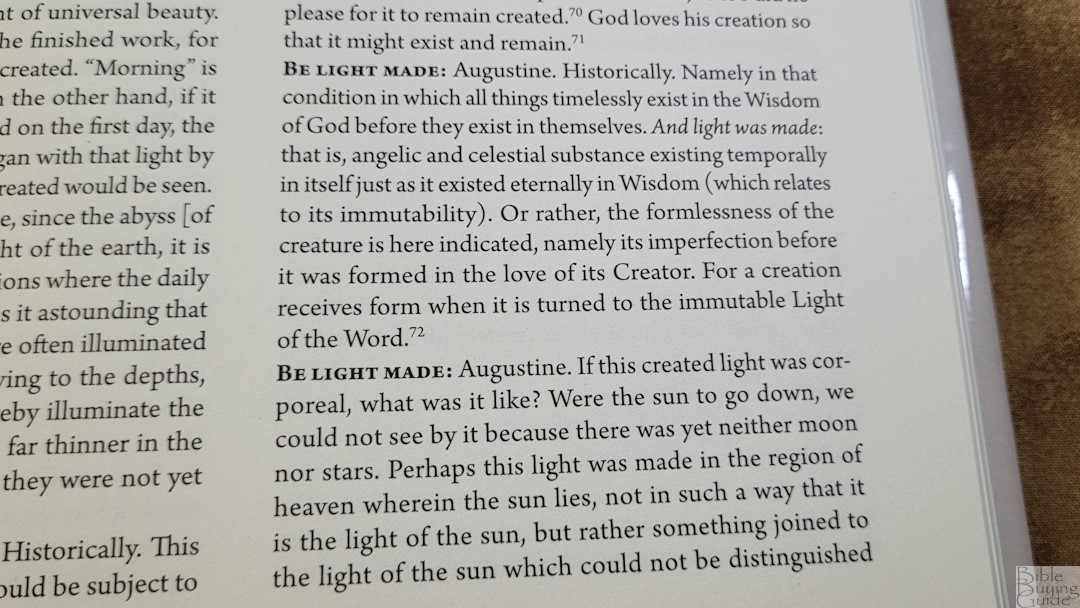
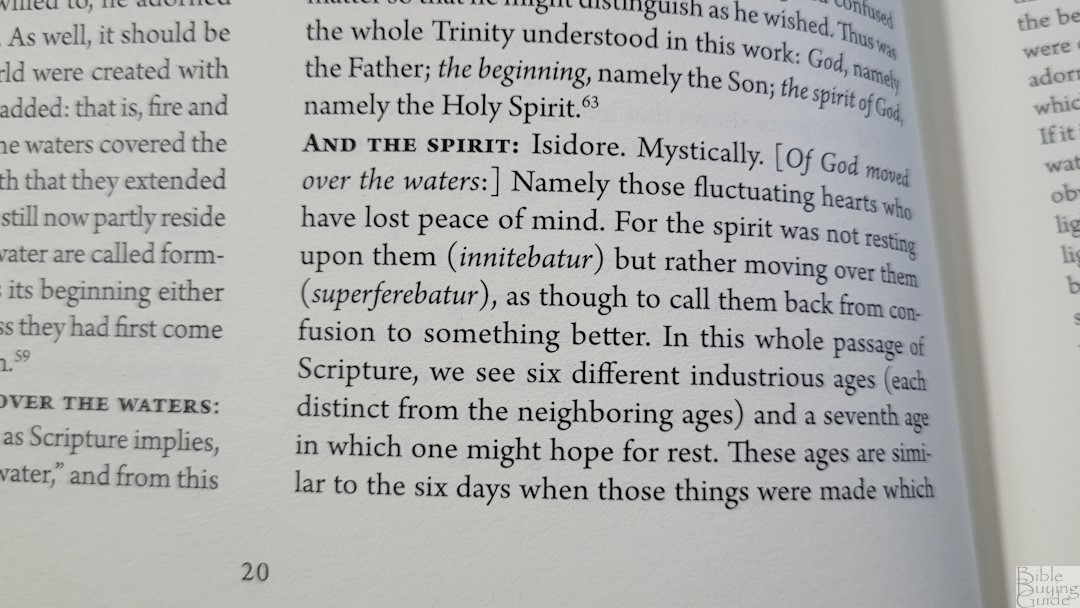
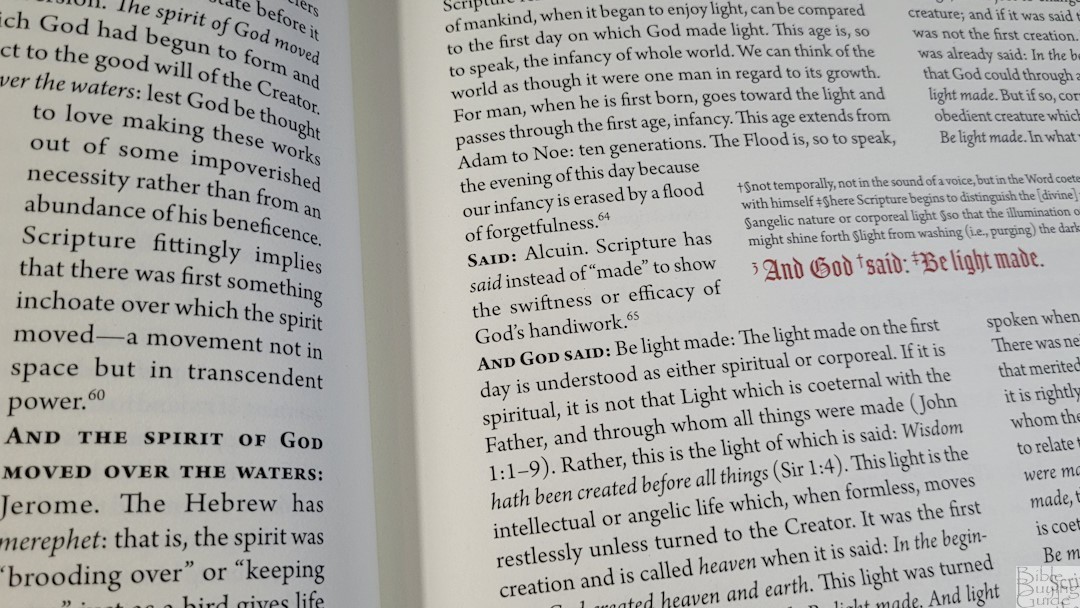
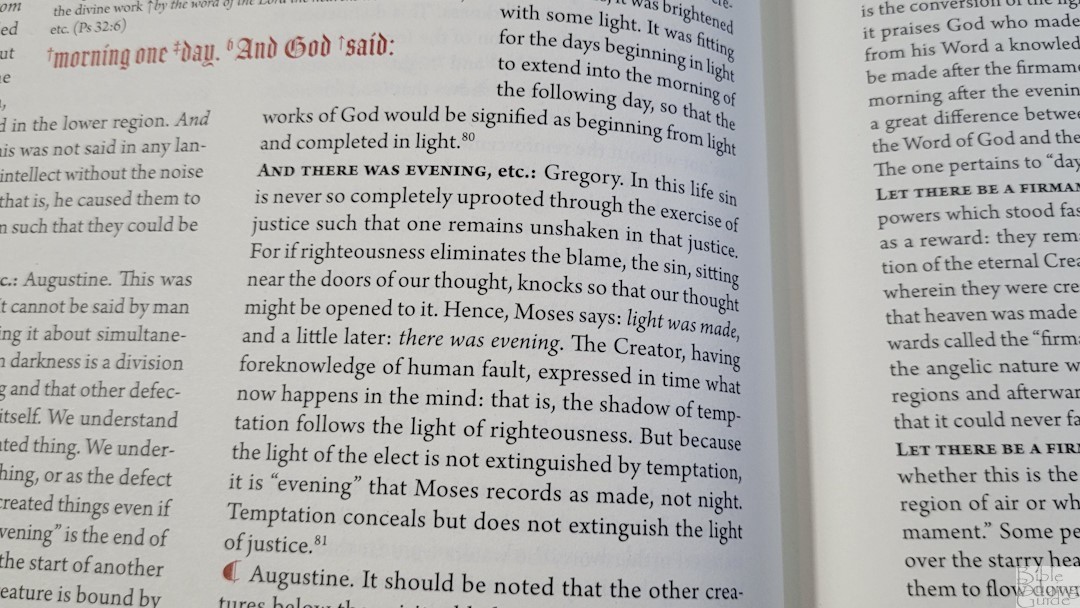
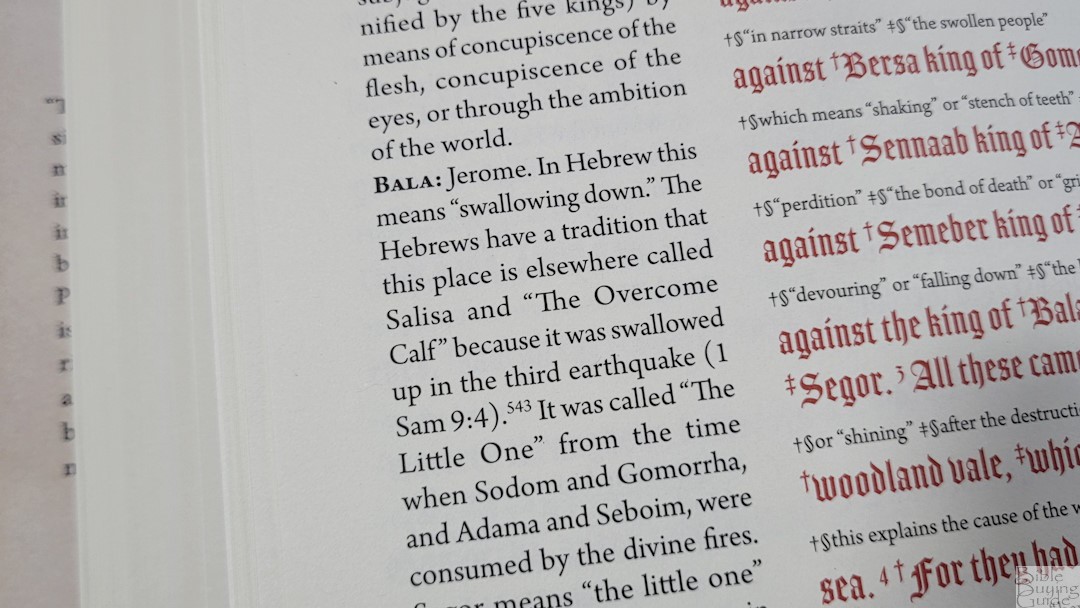
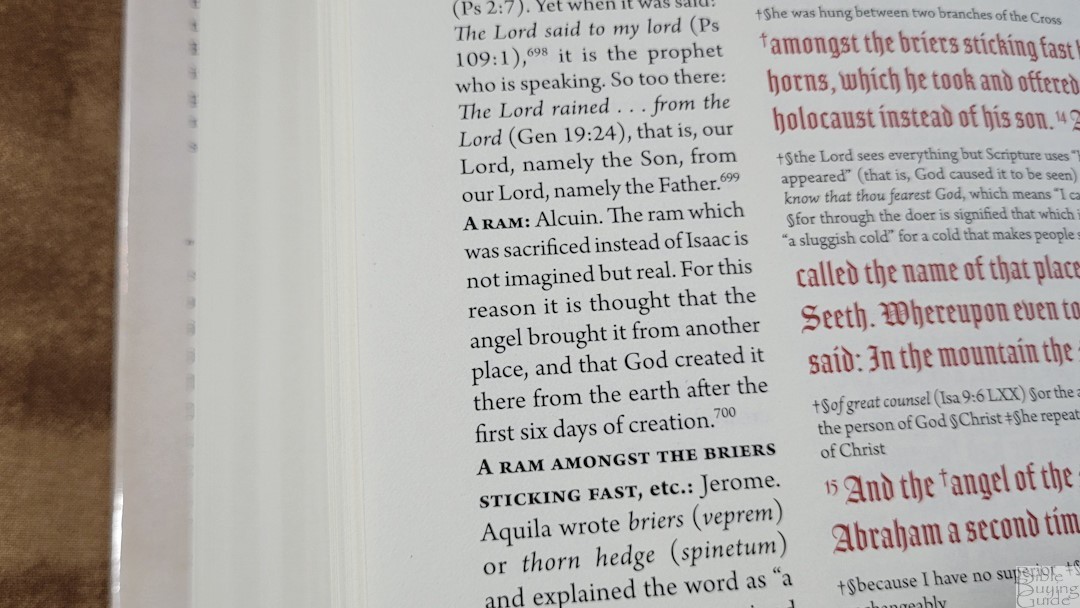
The commentary is from the Middle Ages and includes ancient writers such as Augustine, Bede, Jerome, Gregory the Great, Rabanus, and lots more. The sources used are discussed in the introduction. The commentary includes theology and some allegory.
End Notes and Bibliography
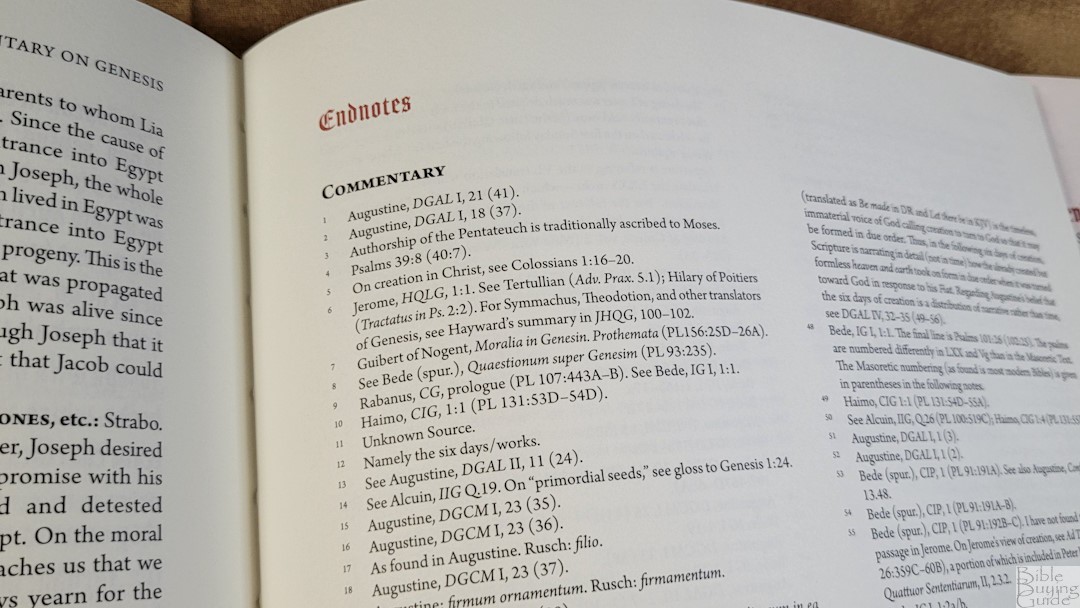
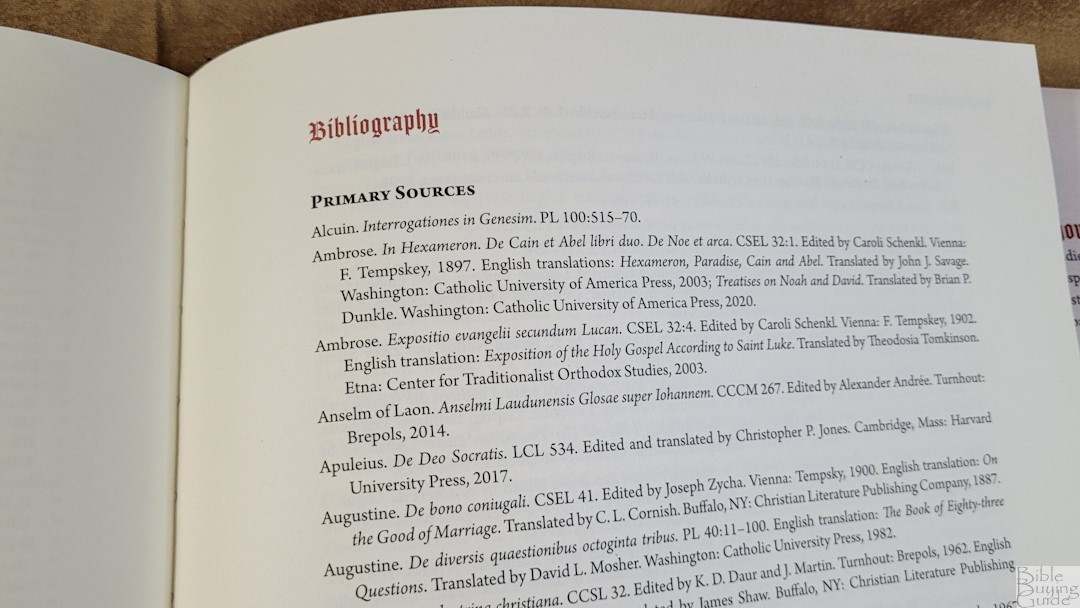
Every note includes a number that links to an end note. The end notes appear in the back and include information about where the commentary comes from. Following the end notes is a bibliography with information about every resource used.
Conclusion
The author provided this Bible in exchange for an honest review. I was not asked to provide a positive review.




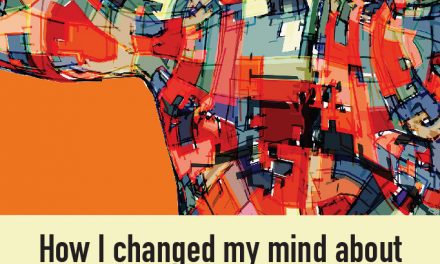





Recent Comments